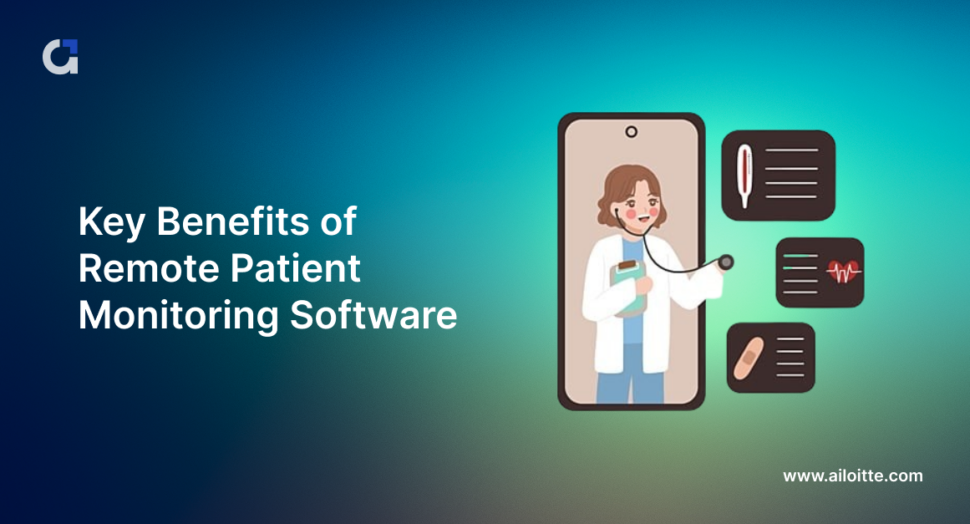Discover the Best Remote Patient Monitoring Software for Your Method
Discover the Best Remote Patient Monitoring Software for Your Method
Blog Article
The Future of Health Care: Remote Individual Keeping An Eye On Streamlined
As health care continues to advance, one location that holds tremendous pledge is remote client surveillance. With a focus on boosting patient outcomes and enhancing health care distribution, remote tracking is positioned to reinvent the industry.
Advantages of Remote Person Tracking
Remote individual tracking presents a multitude of advantages for both doctor and clients alike. One significant advantage is the capability to constantly keep an eye on individuals' vital indicators and health data from another location. This real-time surveillance allows doctor to find any kind of concerning trends or changes immediately, causing early treatments and possibly stopping medical emergencies. Furthermore, remote individual surveillance enhances the overall top quality of treatment by giving a more comprehensive and alternative sight of people' wellness condition beyond traditional in-person brows through.
Furthermore, remote individual monitoring can lead to better individual outcomes and fulfillment. Remote monitoring can lower the need for regular health center brows through, lowering healthcare costs for both companies and people.
Modern Technology Driving Remote Tracking
In the realm of contemporary medical care, technical innovations play a pivotal role in driving the development and performance of remote person surveillance. The integration of cutting-edge technologies such as wearable gadgets, mobile applications, and cloud-based systems has actually transformed the way doctor remotely monitor and take care of patient wellness - software for remote patient monitoring. These innovations enable continuous real-time surveillance of crucial indicators, medicine adherence, and other important wellness data, enabling prompt treatments and customized care strategies
One key innovation driving remote tracking is the Web of Points (IoT), which enables seamless connection in between clinical gadgets and health care systems. IoT tools such as smartwatches and wireless sensors collect and send individual information to central platforms, promoting remote tracking from throughout the globe. Expert system (AI) and artificial intelligence algorithms better improve remote monitoring by assessing huge quantities of person data to discover patterns, forecast health trends, and sharp doctor to potential concerns.
Effect on Health Care Shipment
With the assimilation of advanced technologies driving remote individual tracking, the impact on healthcare distribution is ending up being transformative and increasingly extensive. Remote client surveillance enables doctor to offer even more personalized and proactive treatment to clients, causing improved health and wellness outcomes and reduced healthcare facility admissions. By from another location tracking crucial indications, signs, and medication adherence, healthcare professionals can intervene early, protecting against problems and improving the general quality of treatment.
Additionally, remote tracking improves access to health care solutions, especially for people in rural or underserved areas. Patients can obtain constant tracking and assistance from their homes, eliminating the need for constant in-person visits. This not just conserves time and decreases costs for both clients and health care centers however likewise decreases the danger of exposure to contagious diseases, a vital factor to consider in the present health care landscape.
Furthermore, remote client surveillance allows health care suppliers to far better allot sources and prioritize care based upon real-time information. By determining high-risk clients and stepping in without delay, healthcare delivery becomes more efficient and reliable, eventually bring about an extra sustainable and patient-centered medical care system.
Improving Individual Results

Additionally, RPM enables for aggressive monitoring of persistent conditions, lowering the possibility of intense exacerbations and medical facility readmissions. Individuals take advantage of enhanced benefit and comfort, as they can get care in their very own homes while remaining linked to their medical care carriers. This continuous surveillance not only boosts individual satisfaction however additionally cultivates a sense of empowerment and interaction in their own health monitoring.
Future Trends in Remote Tracking
Welcoming sophisticated modern technologies in remote patient monitoring is shaping the future landscape of medical care distribution. One substantial trend is the boosted usage of wearable tools and sensors to collect real-time information, making it possible for medical care companies to keep an eye on clients constantly without the need for frequent in-person visits.

Furthermore, telehealth systems are ending up being much more sophisticated, enabling virtual consultations, remote medical diagnosis, and remote client keeping track of done in one incorporated system (rpm software). This alternative approach to remote monitoring is simplifying medical care shipment, enhancing person contentment, and ultimately, boosting total top quality of treatment
Verdict
To conclude, remote patient monitoring uses numerous advantages in healthcare delivery, driven by improvements in innovation. It has the potential to improve patient results and change the way health care is delivered. Future fads in remote surveillance will remain to shape the landscape of healthcare, supplying opportunities for more efficient and customized client treatment.
Remote individual surveillance presents a wide range of advantages for both healthcare companies and people alike. Furthermore, remote individual tracking boosts the overall top quality of treatment by giving a much more all natural and comprehensive sight of clients' wellness standing past conventional in-person gos to.
Furthermore, remote patient monitoring remote patient monitoring software can lead to better individual results and complete satisfaction. Remote person tracking enables healthcare companies to offer more proactive and tailored treatment to patients, leading to boosted wellness end results and minimized hospital admissions. Remote patient surveillance (RPM) plays a considerable role in enhancing patient end results by providing continual, real-time data that enables medical care suppliers to step in without delay and readjust treatment strategies as needed.
Report this page